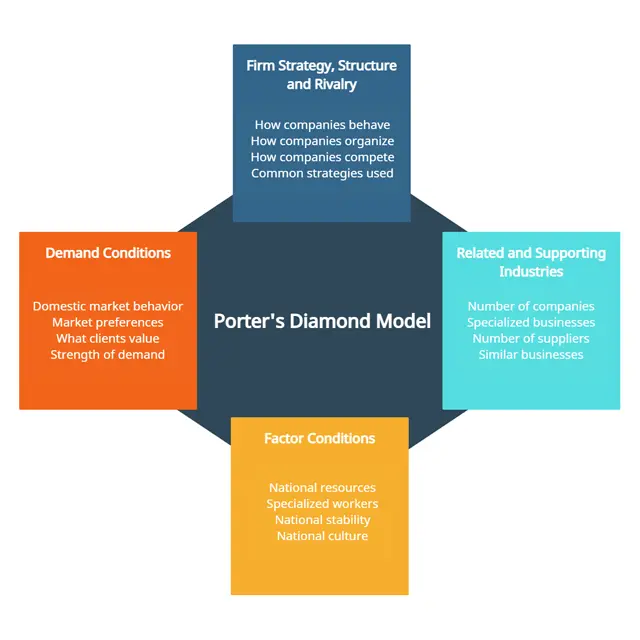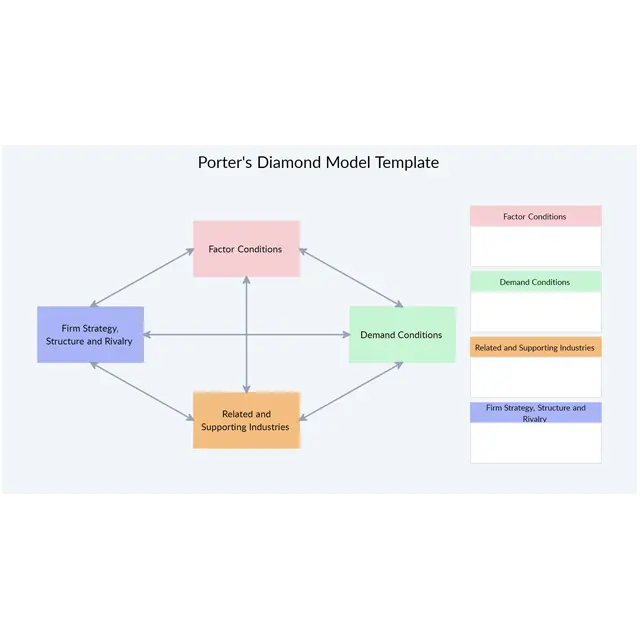Porter’s Diamond Model
Identify Your Competitive Advantage
An infinite canvas to formulate go-to-market strategies based on your market environment.
- Real-time visual collaboration to ideate on product positioning and developing competitive advantages
- Easy-to-use visual canvas to map your ideas and share with decision-makers
- Multiple strategic frameworks and templates to uncover business opportunities
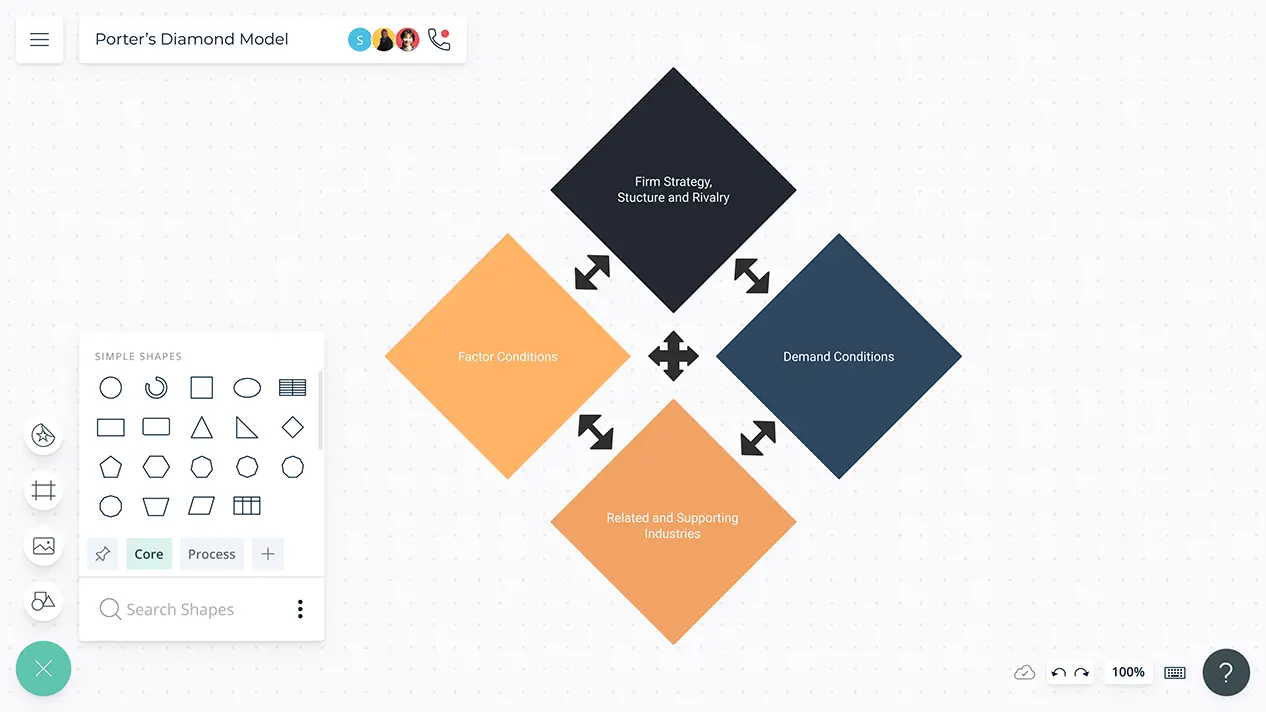
- Real-time visual collaboration to ideate on product positioning and developing competitive advantages
- Easy-to-use visual canvas to map your ideas and share with decision-makers
- Multiple strategic frameworks and templates to uncover business opportunities

Porter’s Diamond Model Templates and Examples

Create Strategies that Capitalize on Strengths

Multiple strategy frameworks and templates to understand your competition and the market such as; SWOT, Ansoff Matrix, Scenario Planning, Strategic Grouping, BCG Matrix, and many more.
Configurable color themes and formatting capabilities to highlight each market player and the matrix they fall under.
Whiteboard with freehand drawing to assist during meetings with stakeholders and to conduct discussions and make notes.
Use frames inside the infinite canvas to split the canvas into five force analysis, action plans, Kanban boards, timelines, grids, and more to understand your marketing strategy.
Plan Your Strategies Together
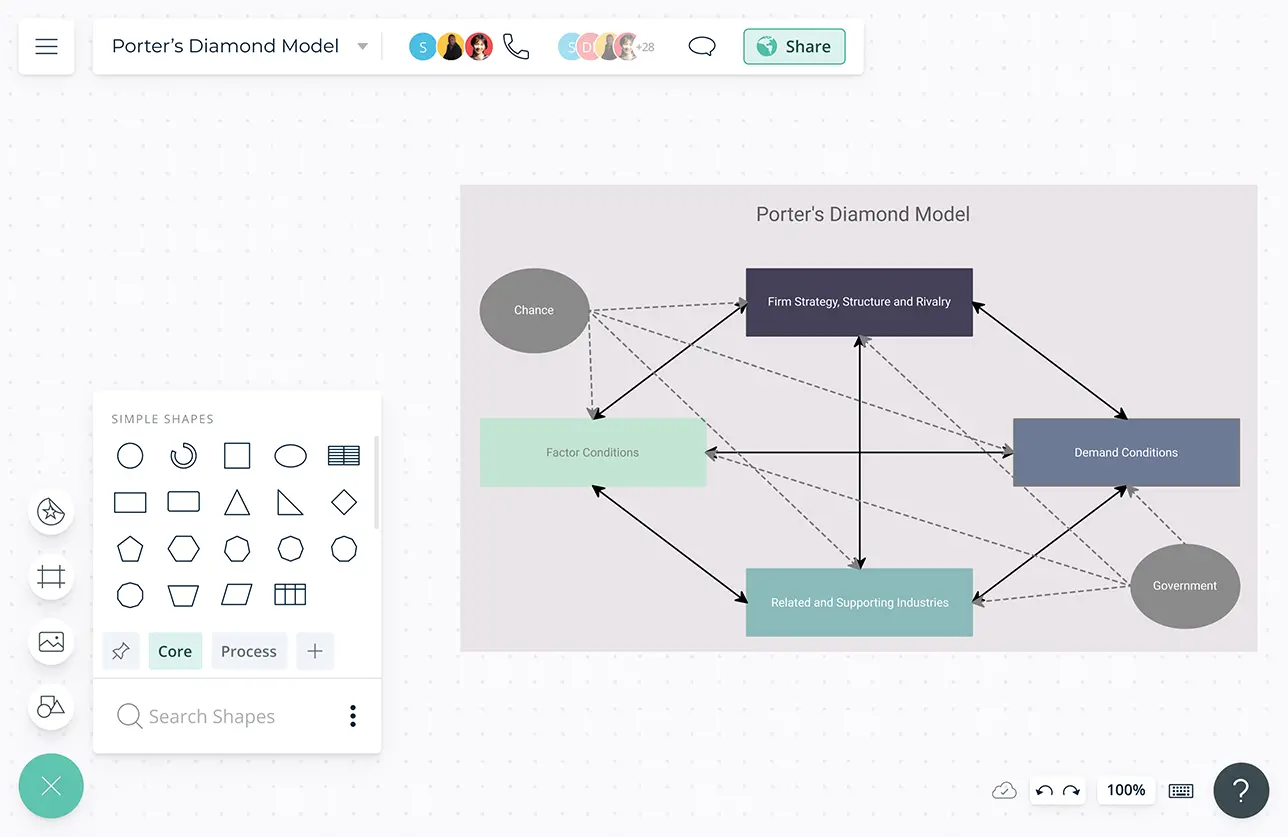
Built-in video conferencing that creates a virtual environment where you feel as if the team is in the same room, planning together.
Use @mention comments to have discussions and follow-ups on the same canvas.
Real-time cursors for any number of participants. Work with your marketing team on a shared canvas to plan strategies.

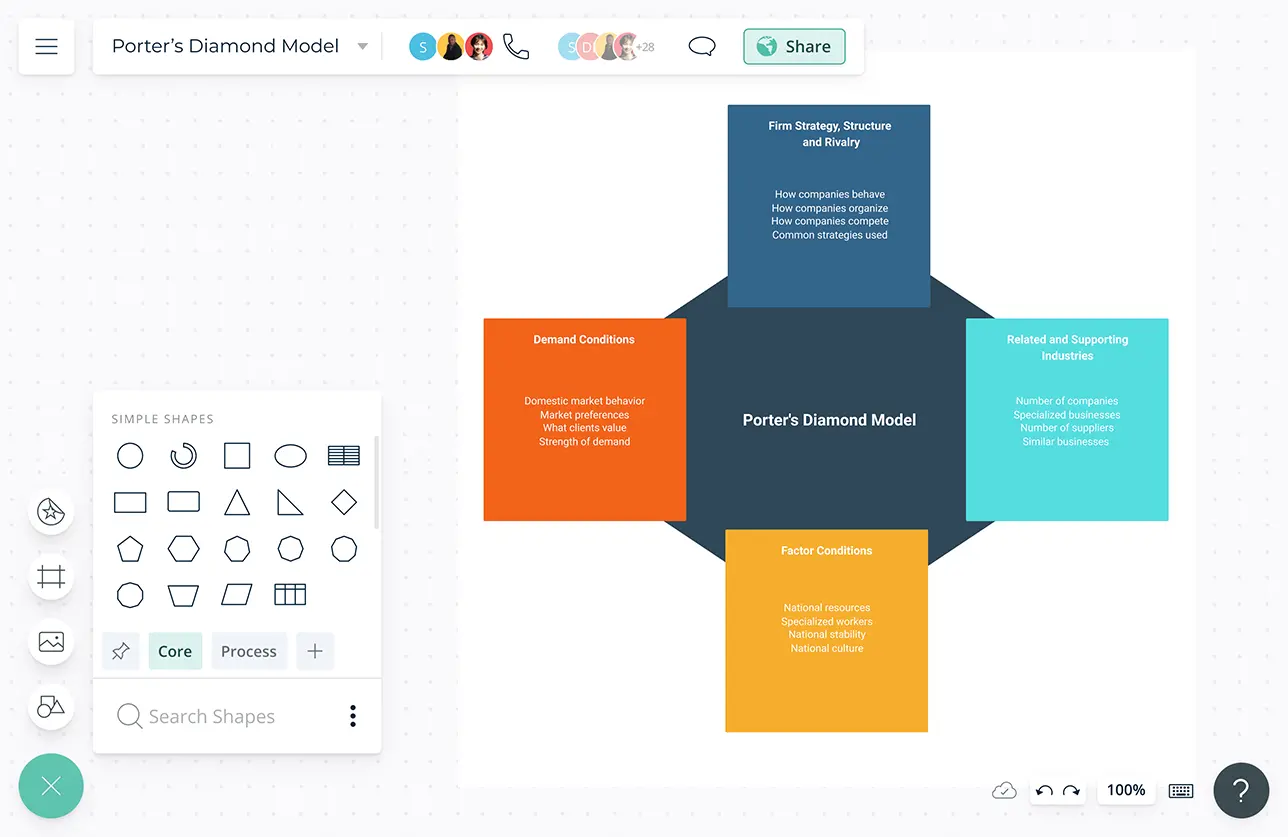
Understand Your Market Position

Import competitor data such as their USPs, product pricing, and other information to analyze their product positioning in the marketplace.
Import images and vectors to the canvas and embed documents with in-app previews to provide more context with relevant resources.
Notes to add detailed docs, attachments, links to capture and understand your competitive advantage.
Keep all the Stakeholders In Sync
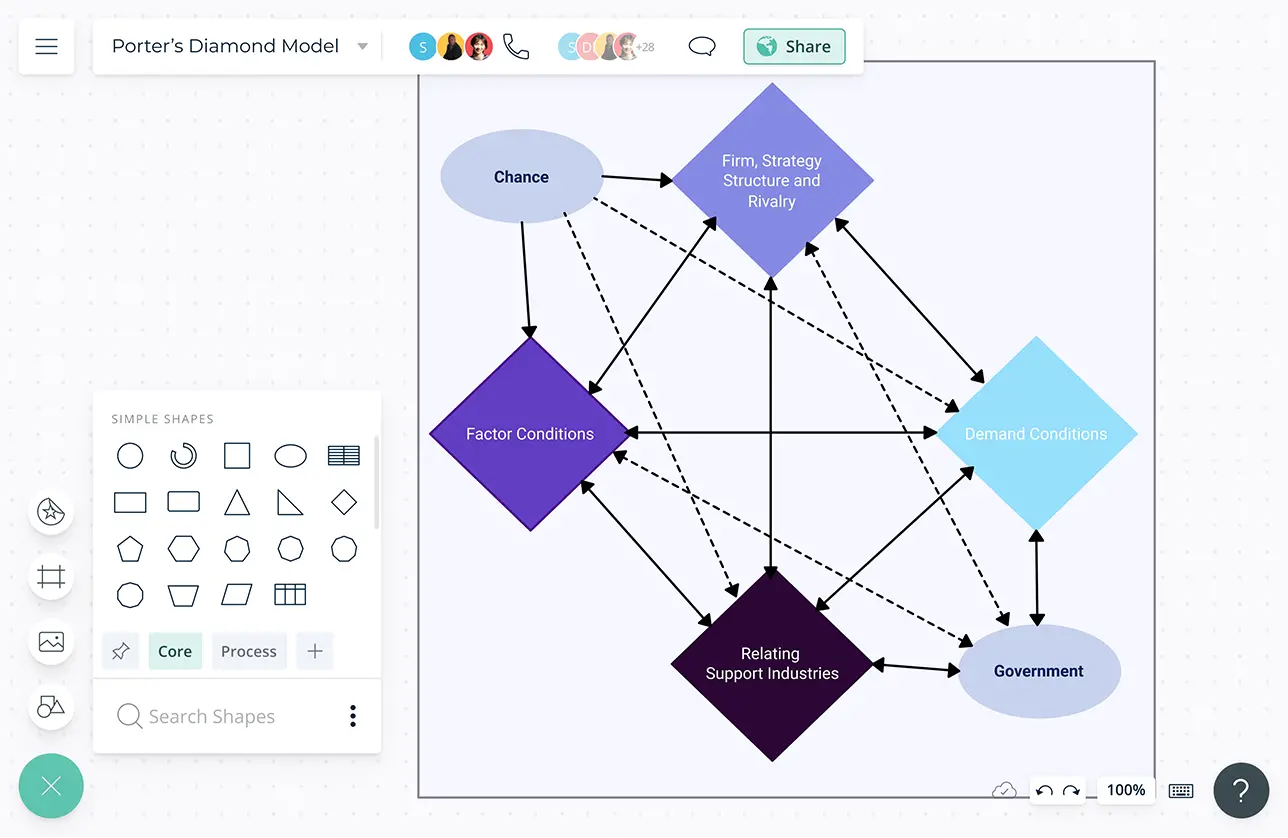
Multiple access levels and roles to streamline managing, sharing, editing, and reviewing market strategies.
Smart notifications to stay up to date with any iteration in the strategies planned.
Multiple integrations to easily connect with popular platforms like Github, Slack, Google Workspace, Confluence, and more.
Built-in tools to create dynamic and interactive marketing and business strategy presentations, reports, and dashboards for stakeholders.

What Is Porter’s Diamond Model?
The Porter’s diamond model or the Porter Diamond Theory of National Advantage, is an economic model developed by Michale Porter. It is designed to help nations understand why some of its industries are more competitive internationally than others. The model also helps answer the question why companies from one country or region are able to sustain competitive advantage in a particular industry. It’s based on 4 factors that help determine national competitive advantage; Factor conditions/ Demand conditions/ Firm strategy, Structure, and Rivalry/ Related and Supporting Industries.
How to Use the Porter’s Diamond Model?
- Factor conditions: this refers to the different types of resources available to the nation as a function of its location. Some of these factors are created such as skilled labor forces, infrastructure, and capital, while other factors are natural such as raw material, land, weather conditions, etc. According to Porter, the created factor conditions are more important than the natural ones as they cannot be duplicated and hence help the nation’s competitive advantage.
- Demand conditions: this explains the demand for the product or service in the home market. Such demand from local customers compels companies to improve quality, innovate and grow. This will allow companies to gain early insight into the future needs of customers and innovate faster hence giving them a competitive advantage over their foreign rivals.
- Related and supporting industries: the presence of related and supporting industries within the nation itself is important for a business to grow, innovate, provide more value to the customers and become more competitive globally. According to Porter, the success of one industry is dependent on the success of its related and supporting industries, as internationally competitive suppliers can provide cost-effective access to inputs.
- Firm strategy, structure, and rivalry: this factor explores the competition faced by an industry in its home market and how that leads them to further improve them in terms of product or service quality, customer service, manufacturing techniques, etc. This competition with one another will ultimately be reflected in the growth of the nation itself.
- The role of government is another component that is connected to Porter’s diamond model in which it’s described as both a ‘catalyst and challenger’. While the governments cannot create competitive industries, they can push and encourage companies to improve themselves and become more competitive.
- The other component is chance. Although Porter hasn’t officially mentioned chance or luck, it is often associated with the diamond model. There are external events such as natural disasters or wars that can make a positive or negative impact on the industry or country. While such factors are beyond the control of companies, they should at least monitor them so they can make well-informed decisions moving forward.

